Facing limited space or water restrictions but still want to grow your own food? You’re not alone. As urban areas expand and climate challenges intensify, gardeners worldwide are weighing the benefits of vertical gardening vs traditional gardening methods. This comprehensive comparison will help you decide which approach best suits your specific needs, whether you’re working with a tiny balcony or a modest backyard in a water-conscious region.
Understanding Vertical and Traditional Gardening
What is Vertical Gardening?
Vertical gardening utilizes upward space to grow plants on walls, trellises, towers, or specially designed structures. This method transforms unused vertical surfaces into productive growing areas, making it ideal for urban environments with limited horizontal space.

What is Traditional Gardening?
Traditional gardening involves growing plants horizontally in soil, either directly in the ground or in raised beds. This time-honored approach spreads plants across available ground space, allowing for natural root development and plant spacing.

Space Efficiency Comparison
One of the most significant differences between these gardening methods is how they utilize available space. Let’s examine how each approach maximizes growing area in different environments.
Vertical Gardening Space Advantages
- Utilizes unused wall space and vertical surfaces
- Ideal for balconies, patios, and small yards
- Can grow 3-4 times more plants per square foot
- Perfect for apartments and urban settings
- Allows gardening in previously unusable spaces
Traditional Gardening Space Limitations
- Requires substantial horizontal ground area
- Limited options for concrete-heavy environments
- Less efficient use of available space
- Challenging in urban settings
- Difficult to implement in rental properties
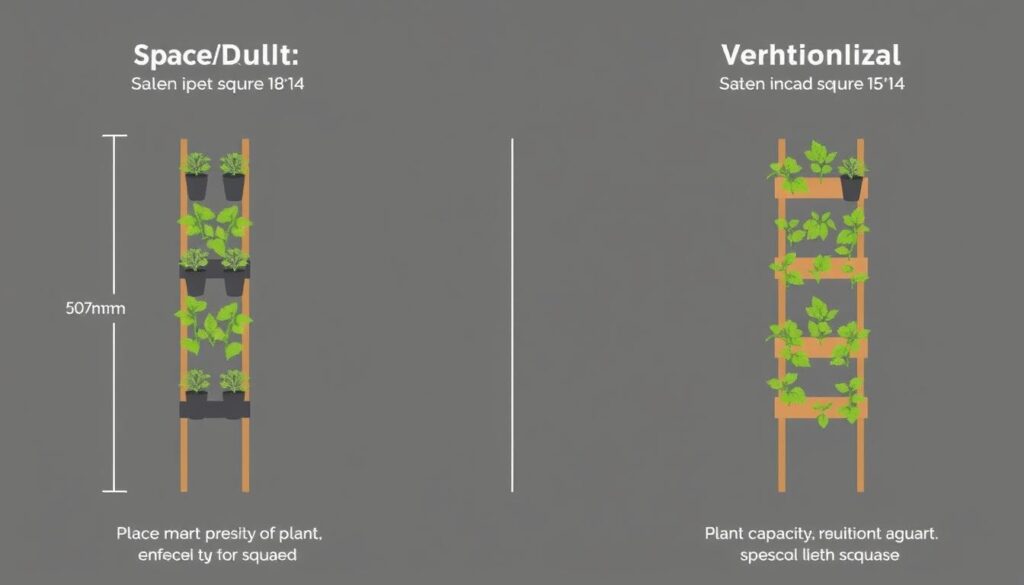
“In my 500 square foot urban balcony, I was able to grow over 200 plants using vertical gardening methods. The same space would have accommodated only about 50 plants using traditional methods.”
Calculate Your Garden Space Efficiency
Use our free interactive tool to determine how many plants you can grow in your available space using either vertical or traditional methods.
Yield Potential: Which Method Produces More?
While space efficiency is important, the ultimate goal of any garden is to produce food. Let’s compare how vertical and traditional gardens perform when it comes to actual harvest yields.
| Crop Type | Vertical Garden Yield | Traditional Garden Yield | Best Method |
| Leafy Greens (Lettuce, Spinach) | Excellent (3-4 harvests/season) | Good (2-3 harvests/season) | Vertical |
| Climbing Plants (Tomatoes, Cucumbers) | Very Good (increased airflow) | Good (needs staking) | Vertical |
| Root Vegetables (Carrots, Potatoes) | Poor (insufficient depth) | Excellent (natural growth) | Traditional |
| Herbs (Basil, Mint, Thyme) | Excellent (accessible harvesting) | Good (spreads horizontally) | Vertical |
| Large Plants (Squash, Melons) | Fair (needs support) | Excellent (room to spread) | Traditional |
Calculating Your Potential Yield
To estimate your garden’s yield potential, consider these factors:
- Available space (square footage)
- Sunlight exposure (hours per day)
- Growing season length in your climate
- Types of crops you want to grow
- Water availability and restrictions
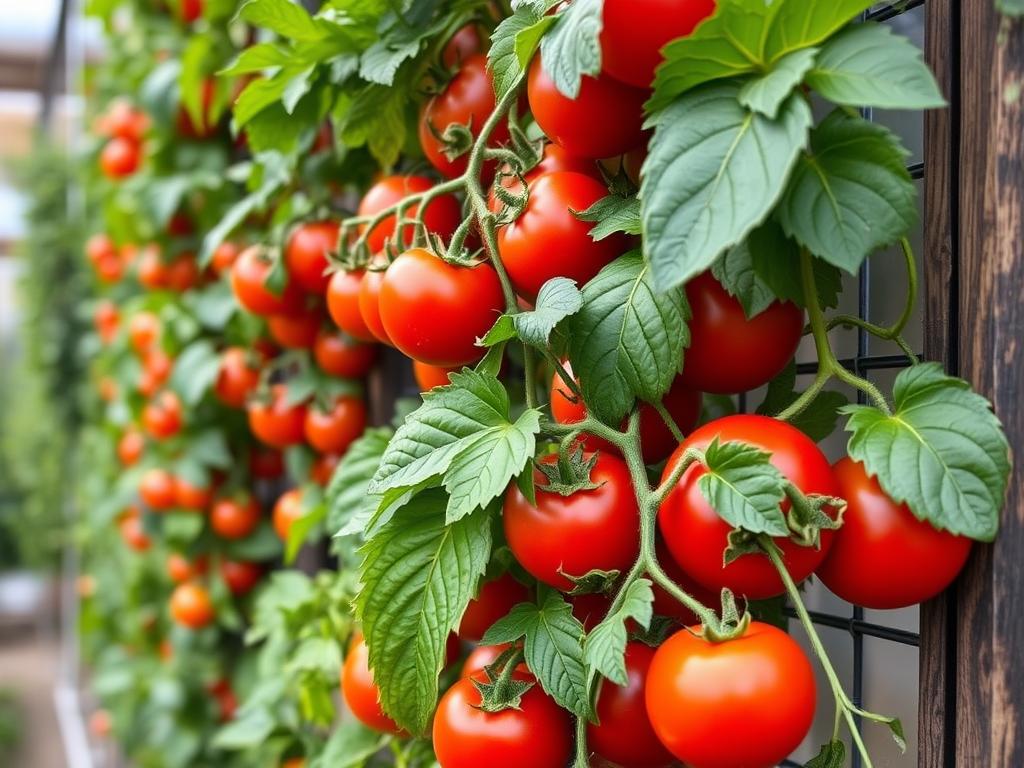
Pro Tip: For maximum efficiency, consider a hybrid approach. Use vertical methods for climbing plants and herbs, while growing root vegetables and spreading plants in traditional beds.
Download Our Crop Selection Guide
Get our free guide to selecting the right crops for your gardening method, with specific recommendations for arid climates and limited spaces.
Sustainability & Water Efficiency
In regions with water restrictions or drought conditions, the sustainability of your gardening method becomes crucial. Let’s compare how vertical and traditional gardens perform in terms of resource usage and environmental impact.
Water Usage Comparison
Vertical Garden Water Efficiency
Vertical gardens typically use 20-30% less water than traditional gardens due to:
- Targeted drip irrigation systems
- Reduced evaporation from soil surface
- Water recirculation possibilities
- Less runoff and waste
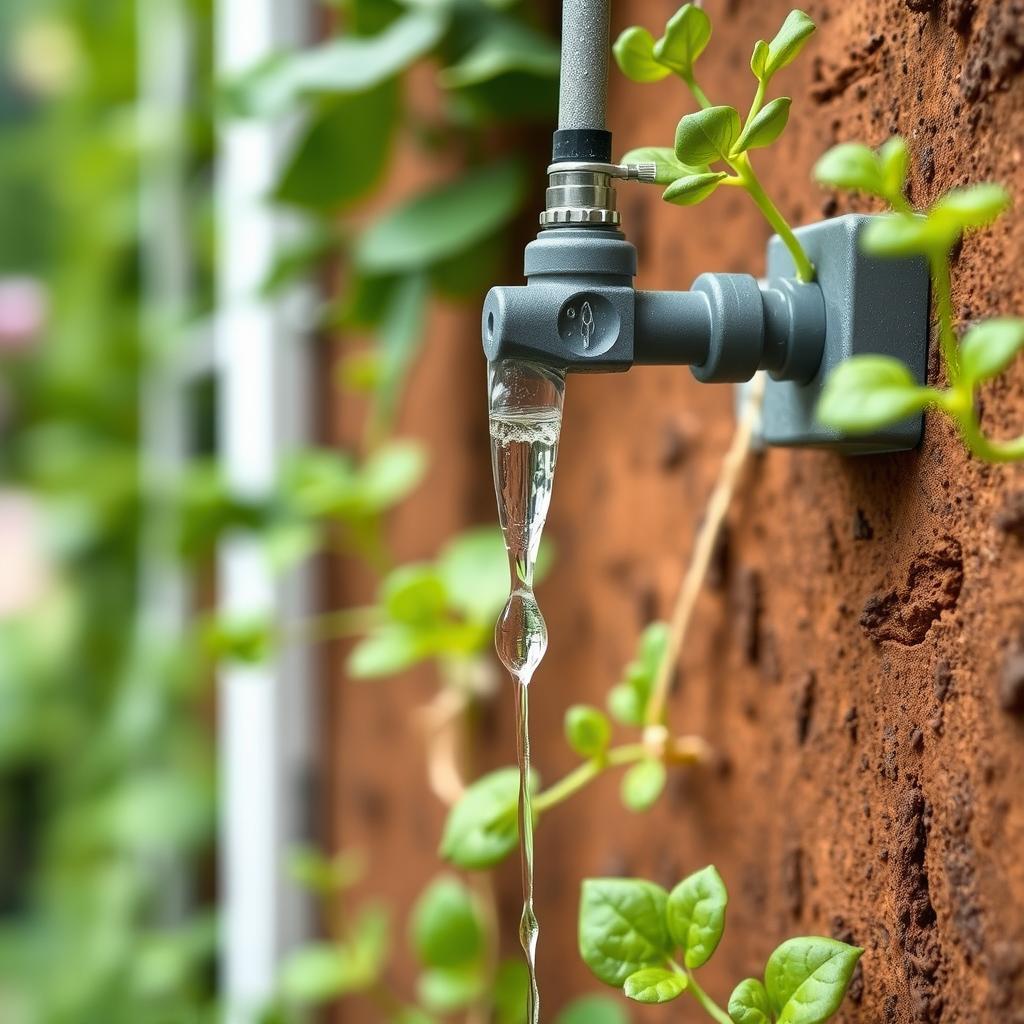
Traditional Garden Water Needs
Traditional gardens typically require more water due to:
- Greater soil surface area exposure
- Higher evaporation rates
- Less precise irrigation methods
- More water lost to surrounding areas

Environmental Impact
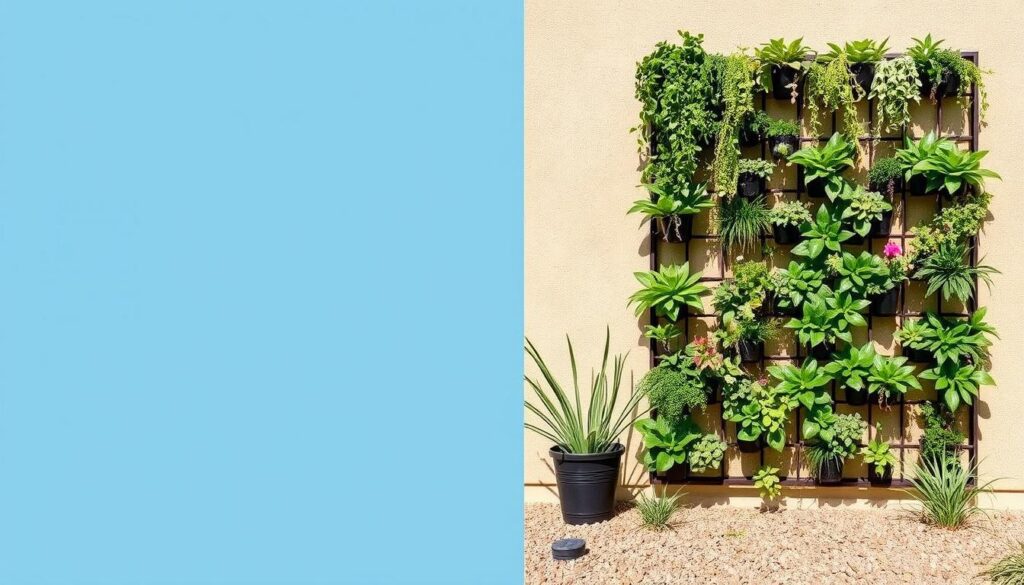
“Our community garden in Arizona switched half of its plots to vertical systems and recorded a 40% reduction in water usage while maintaining similar yield levels.”
Water-Smart Gardening Newsletter
Join our community of water-conscious gardeners and receive monthly tips on reducing water usage while maximizing harvests in dry climates.
Setup & Maintenance: Getting Started
The initial setup and ongoing maintenance requirements differ significantly between vertical and traditional gardens. Understanding these differences will help you choose the method that best fits your lifestyle and resources.
Vertical Garden Setup
Materials Needed:
- Vertical structure (trellis, wall pockets, tower)
- Growing containers or pouches
- Lightweight growing medium
- Drip irrigation system
- Support fasteners and hardware
Setup Process:
- Select and prepare your vertical structure
- Install the structure securely on wall or stand
- Set up irrigation system with timer
- Fill containers with growing medium
- Plant appropriate varieties for vertical growth
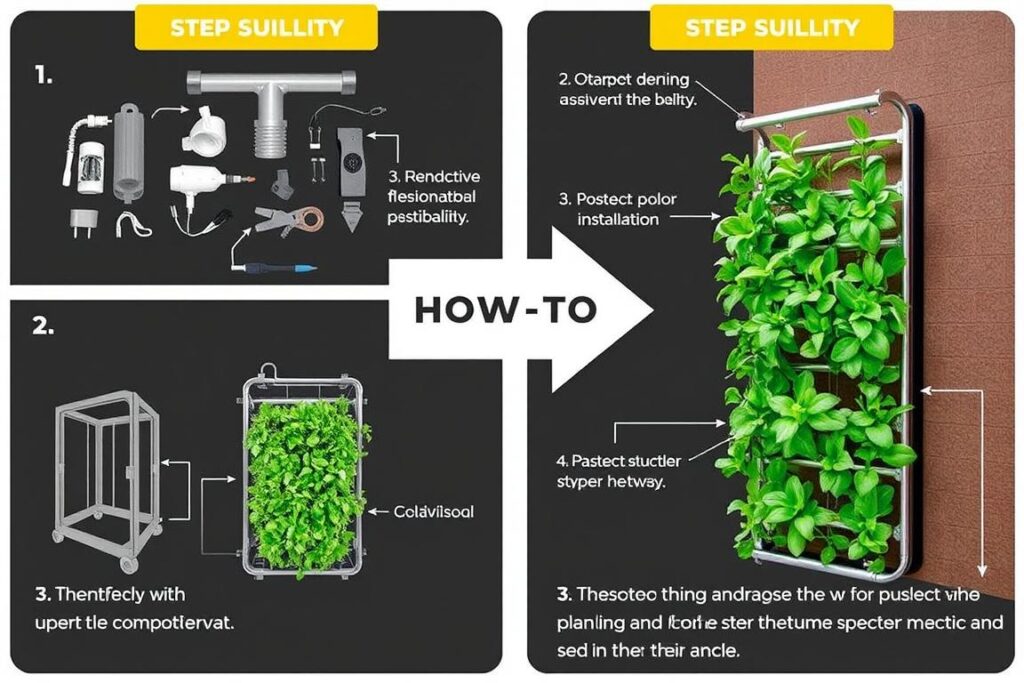
Traditional Garden Setup
Materials Needed:
- Garden tools (shovel, rake, hoe)
- Quality topsoil or garden soil
- Compost or organic matter
- Mulch for moisture retention
- Irrigation equipment
Setup Process:
- Clear and prepare the ground area
- Test and amend soil as needed
- Create planting rows or beds
- Install basic irrigation
- Plant seeds or seedlings at proper spacing
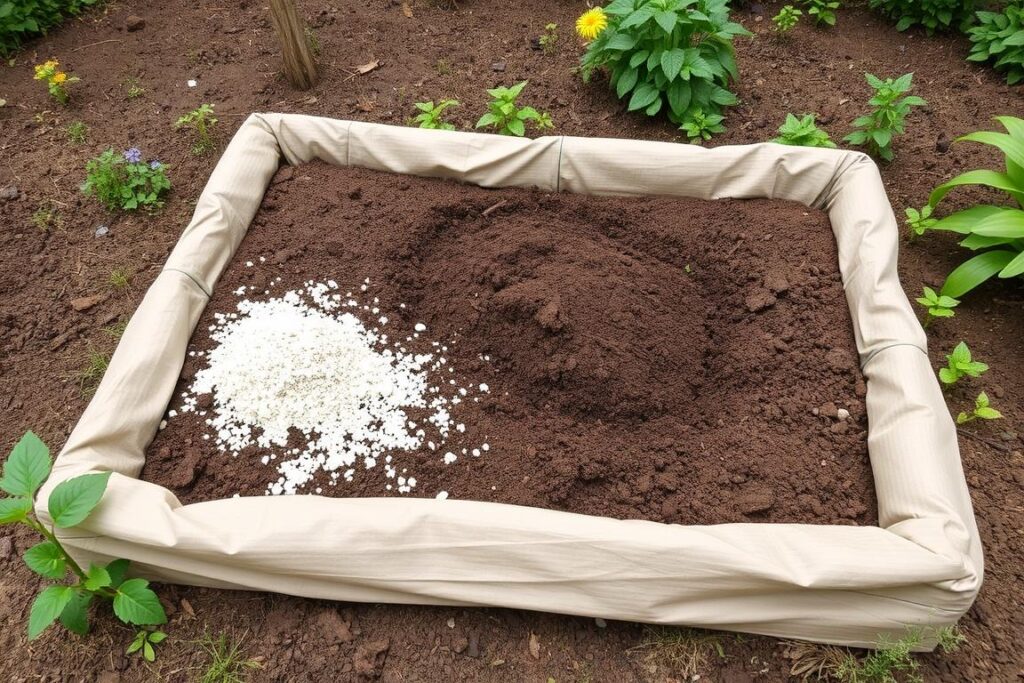
Maintenance Comparison
| Maintenance Task | Vertical Garden | Traditional Garden |
| Watering Frequency | More frequent (1-2 times daily) | Less frequent (2-3 times weekly) |
| Weeding | Minimal | Regular requirement |
| Fertilizing | More frequent, lighter applications | Less frequent, seasonal applications |
| Pest Management | Easier to monitor, better airflow | More challenging to monitor |
| Physical Effort | Less bending, easier access | More bending, kneeling required |
Making Your Decision: Which Method Is Right For You?
Choosing between vertical and traditional gardening depends on your specific circumstances, resources, and goals. Use this decision guide to help determine which approach best suits your needs.
- You have very limited horizontal space
- You live in an apartment or urban setting
- Water conservation is a priority
- You have physical limitations that make bending difficult
- You primarily want to grow leafy greens, herbs, and climbing vegetables
- You prefer a modern, space-efficient aesthetic
Choose Vertical Gardening If:
- You have ample yard space available
- You want to grow root vegetables and spreading plants
- You prefer lower startup costs
- You value established, proven methods
- Supporting maximum biodiversity is important to you
- You enjoy the physical connection with soil and earth
Choose Traditional Gardening If:
- You have moderate space available
- You want to grow diverse crop types
- You’re interested in experimenting with both methods
- You have varying sun exposure in your garden area
- You want to maximize both space efficiency and crop diversity
- You’re willing to invest time in learning both techniques
Consider Hybrid Approach If:
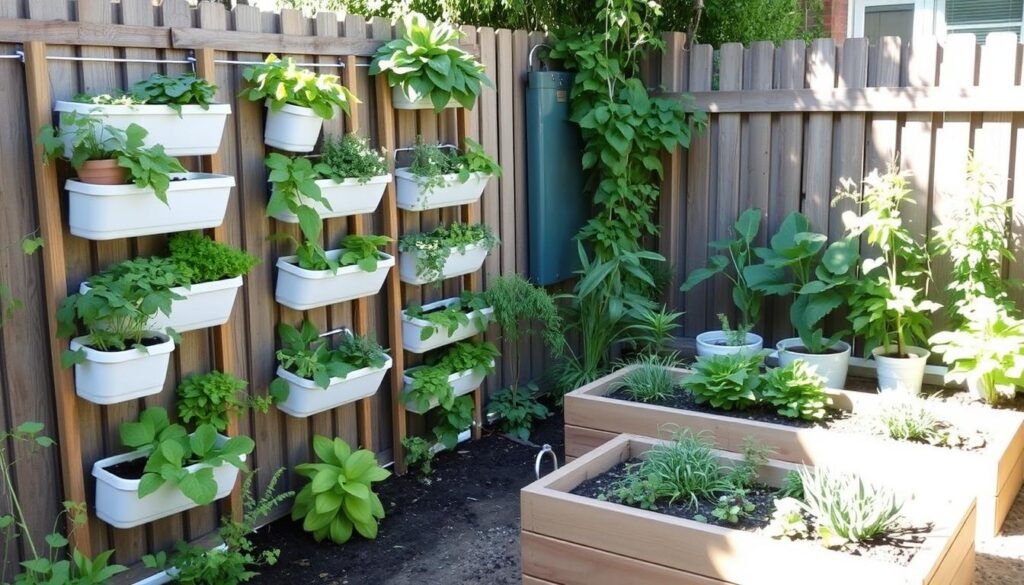
Remember: There’s no one-size-fits-all solution. Many successful gardeners use a combination of vertical and traditional methods to maximize their growing potential while working within their space and resource constraints.
Start Your Perfect Garden Today
Join our community of space-conscious, water-smart gardeners and receive our comprehensive guide to setting up your ideal garden system.
Frequently Asked Questions
What are the main disadvantages of vertical gardens?
The primary disadvantages of vertical gardens include higher initial setup costs, more frequent watering requirements, limited growing medium depth for root vegetables, and the need for sturdy support structures for heavier plants. Additionally, vertical systems may require more frequent fertilization as nutrients can leach out more quickly.
Can I convert my traditional garden to a vertical garden?
Yes, you can gradually convert portions of your traditional garden to vertical systems. Start by adding trellises or wall-mounted planters for climbing vegetables like beans, peas, and cucumbers. This hybrid approach allows you to experiment with vertical methods while maintaining your traditional beds for crops that perform better horizontally.
Which method is better for water conservation in dry climates?
Vertical gardens typically offer better water conservation in dry climates when properly designed with efficient drip irrigation systems. The reduced soil surface area minimizes evaporation, and water can be precisely delivered to plant roots. Some vertical systems even recirculate water, further reducing consumption by up to 40% compared to traditional gardens.
Are vertical gardens more expensive to maintain?
While vertical gardens have higher initial setup costs, their ongoing maintenance expenses vary. They typically require less spending on weed control and pest management but may need more frequent fertilization and potential system repairs. Traditional gardens generally have lower startup costs but may require more ongoing investment in soil amendments, mulch, and water.
Conclusion: Finding Your Perfect Balance
The debate between vertical gardening vs traditional gardening isn’t about declaring a universal winner—it’s about finding the right approach for your unique situation. Consider your available space, the crops you want to grow, your climate conditions, and your personal preferences when making your decision.
Many successful gardeners find that a thoughtful combination of both methods allows them to maximize their growing potential while working within their constraints. Whether you choose to go fully vertical, stick with traditional methods, or create a hybrid garden, the most important thing is to start growing and enjoy the process of producing your own food.
Remember that gardening is both a science and an art—don’t be afraid to experiment, adapt, and develop a system that works perfectly for your needs. Happy gardening!
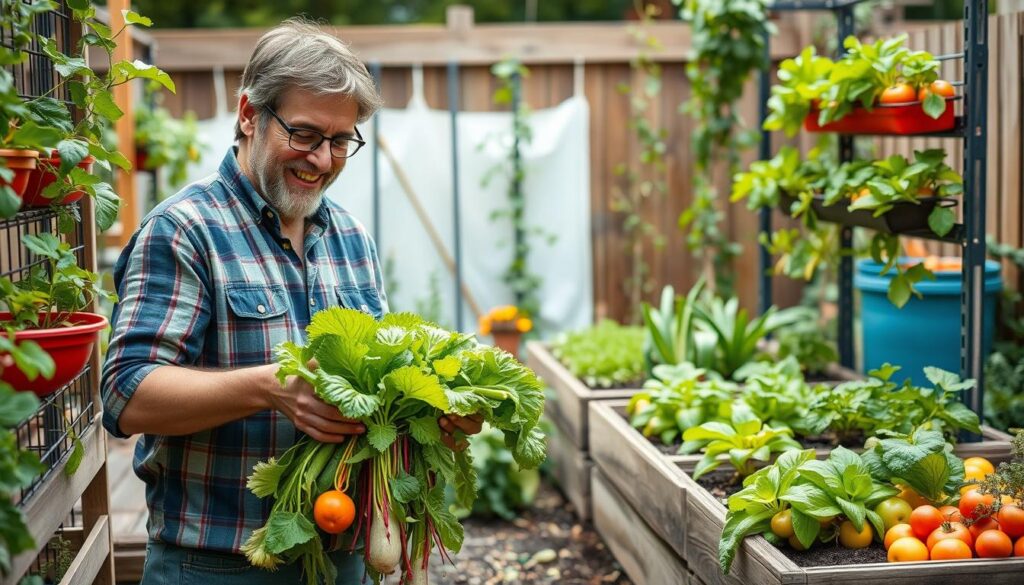
Will is a vertical gardening enthusiast and sustainable cultivation specialist with a passion for helping people grow fresh food in small spaces and dry climates. With years of hands-on experience testing smart irrigation systems, optimizing urban gardens, and exploring eco-friendly solutions, this author shares clear, practical tips to turn any corner into a productive garden. Whether on a sunny balcony or in a compact backyard, Will helps readers save water, maximize space, and enjoy healthy harvests year-round. When not tending to his plants, you’ll find him sipping herbal tea and sketching ideas for new sustainable projects.

